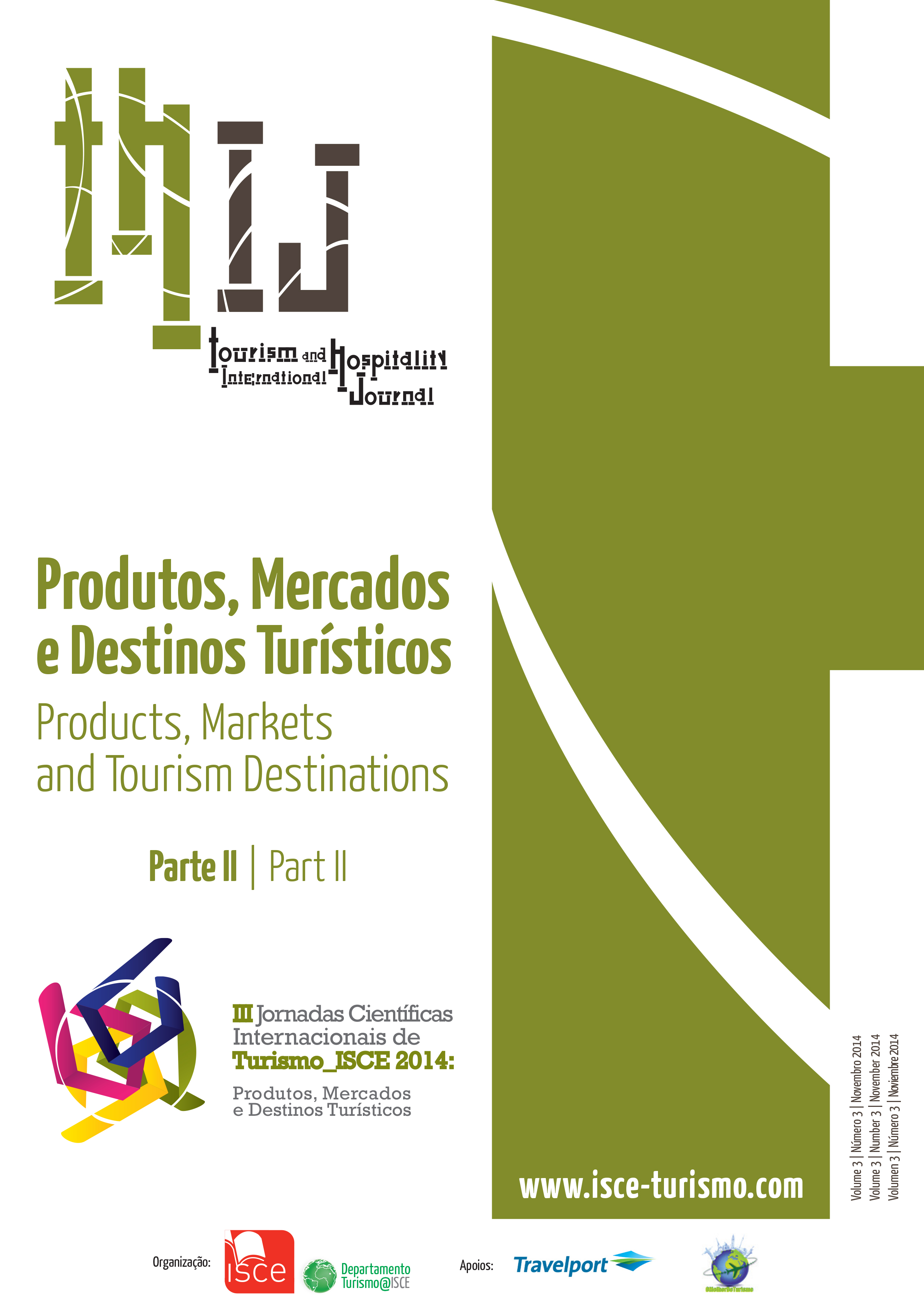The importance of the factorial analysis of correspondences in the careful identification of the profile of a certain tourist market. Analysis of the Caramulo case
DOI:
https://doi.org/10.57883/thij3(2)2014.30152Keywords:
Correlation, Profile, Promotion, MarketingAbstract
Determine the tourist profile of the tourist that visits one region is a very important subject in the field of research of tourism marketing because it allows the evaluation and the perception of its features, as well as allowing direct the actions of Marketing adapting specific forms of communication to that type of tourist. For an investigation of this type one of the first procedures entail the determination of the objectives of the study and placement of hypotheses. To assess the hypotheses, not just a mere description of reality, it is essential to make inferences about the variables under study. Technological progress pushed the data analysis and tuning of new statistical processes. This advance allowed to quickly manipulate a large number of information such as factor analysis and the study of correspondence of the connection between a large number of variables simultaneously. This article will argue that the application of correlation analysis of variables has one considerable importance in determining a more accurate consumer profile of a particular tourist destination. To illustrate this proficiency has been taken based on a study done at the consumer profile of the region Caramulo to understand what are their main characteristics and behaviors. The study also allowed us to assess if the promotional activities carried out by organizations in the region is being considered all its tourist potential. For this purpose, yet correlated information sources that influenced the making of the decision to choose this destination, with age, and the degree of customer satisfaction, with the intention to visit the region again, which yielded conclusions that proved quite interesting and useful from the point of view of regional marketing.
References
Almeida, S. (2003). A contribuição da animação turística para o aumento das taxas de ocupação de uma região. Dissertação de Mestrado, Universidade de Aveiro.
Ashworth, G & Voogd. H. (1994). Marketing of tourism places: What are we doing? In Global Tourist Behavior. Ed. Uysal. New York: International Business Press.
Baker, M. & Cameron, E. (2008). Critical success factors in destination marketing, Tourism and Hospitality Research, 8(2).
Bryman, A & Cramer, D. (2003) Análise de dados em ciências sociais - Introdução às técnicas utilizando o SPSS para windows. Oeiras: Celta Editora.
Bryman, A. (1988). Quantity and quality in social research. London: Unwin Hyman.
Cooper, C. & Hall, M. (2008) Contemporary tourism: An international approach. Oxford: Elsevier.
Fecha, T. (2013). A importância do perfil do turista na promoção de um destino turístico: O caso do Caramulo. Dissertação ESTM – Peniche.
Guimarães, P.R.B. (2008). Métodos quantitativos estatísticos. Curitiba: IESDE Brasil S.A.
Levin, J. & Fox, J. A. (2004). Estatística para as Ciências Humanas. São Paulo: Prentice Hall.
Moreira M., M. R. & Reis, E. (1998). As sondagens e a população: O que fazer para a reconciliação. Revista de Estatística, 1, 97-109.
Pestana, M. & H. Gageiro, J. N. (2000). Análise de dados para ciências sociais: A complementaridade do SPSS”, 5ª Edição. Lisboa: Edições Silabo.
Quivy, R & Campenhoudt, L. (2005). Manual de investigação em ciências sociais, 4.ª Edição. Lisboa: Gradiva.
Zimmer, P. & Grassmann, S. (1996) Avaliar o potencial turístico de um território. Bruxelas: Observatório Europeu Leader.
Faísca, L. (2010). Modelar relações entre variáveis quantitativas, seminários de métodos e análise de dados. dIsponível em http://w3.ualg.pt/~lfaisca/SMAD05/SMAD%2005.pdf
Plano Diretor Municipal de Tondela. (2008). Disponível em https://www.google.pt/#q=plano+diretor+municipal+tondela.
Silva, F. V., Barbas, M. P. B. S. C. & Silva, L. A. C. (2006). Explorar o SPSS em contexto educativo. Santarém: Escola Superior de Educação de Santarém. Disponível em http://repositorio.ipsantarem.pt/handle/10400.15/389.
Downloads
Published
How to Cite
Issue
Section
License
Copyright (c) 2023 This work is licensed under a Creative Commons - Attribution 4.0 International (CC BY 4.0)

This work is licensed under a Creative Commons Attribution 4.0 International License.
This work is published under the Creative Commons Attribution 4.0 International License.






